
Redmineflux vs Trello: How to Choose Project Management Tool in 2023
In this article, we will highlight some noteworthy features of two prominent project management tools: Redmineflux and Trello and discover the basic difference between them.
Take advantage of our current pricing, which is valid till 31st Dec, 2023. Prices will be subject to change starting 1st Jan 2024.
 All Plugins Combo
All Plugins Combo Project Management Combo
Project Management Combo Redmine Essential Plugin Combo
Redmine Essential Plugin ComboSOLUTIONS
Purchase individual plugins that suit your business needs.
How fast do you want us to respond? You decide.
Minimize project management costs with Redmineflux subscription model.
Beautiful, responsive, & systematic themes for Redmine users.
We’ve just released an
update!
Learn About Our New Analytics Dashboard

PRICING
Purchase individual plugins that suit your business needs.
Buy our curated bundles containing business-critical plugins..
Check out our plans for hosted Redmineflux.
Beautiful, responsive, & systematic themes for Redmine users.
We’ve just released an update!
Learn About Our New Analytics Dashboard

RESOURCES
Get to know us better.
Latest trends & best practices in project management.
Read what our customers say about Redmineflux.
Tips, tricks & guides to unlock the full potential of Redmineflux.
Release notes on bug fixes, features & version updates.
See how Redmineflux can be leveraged in different scenarios.
We’ve just released an update!
Learn About Our New Analytics Dashboard





Design-rich, feature-driven plugins to extend the capability of your Redmine.
Rating 4.5 out of 5 by clients

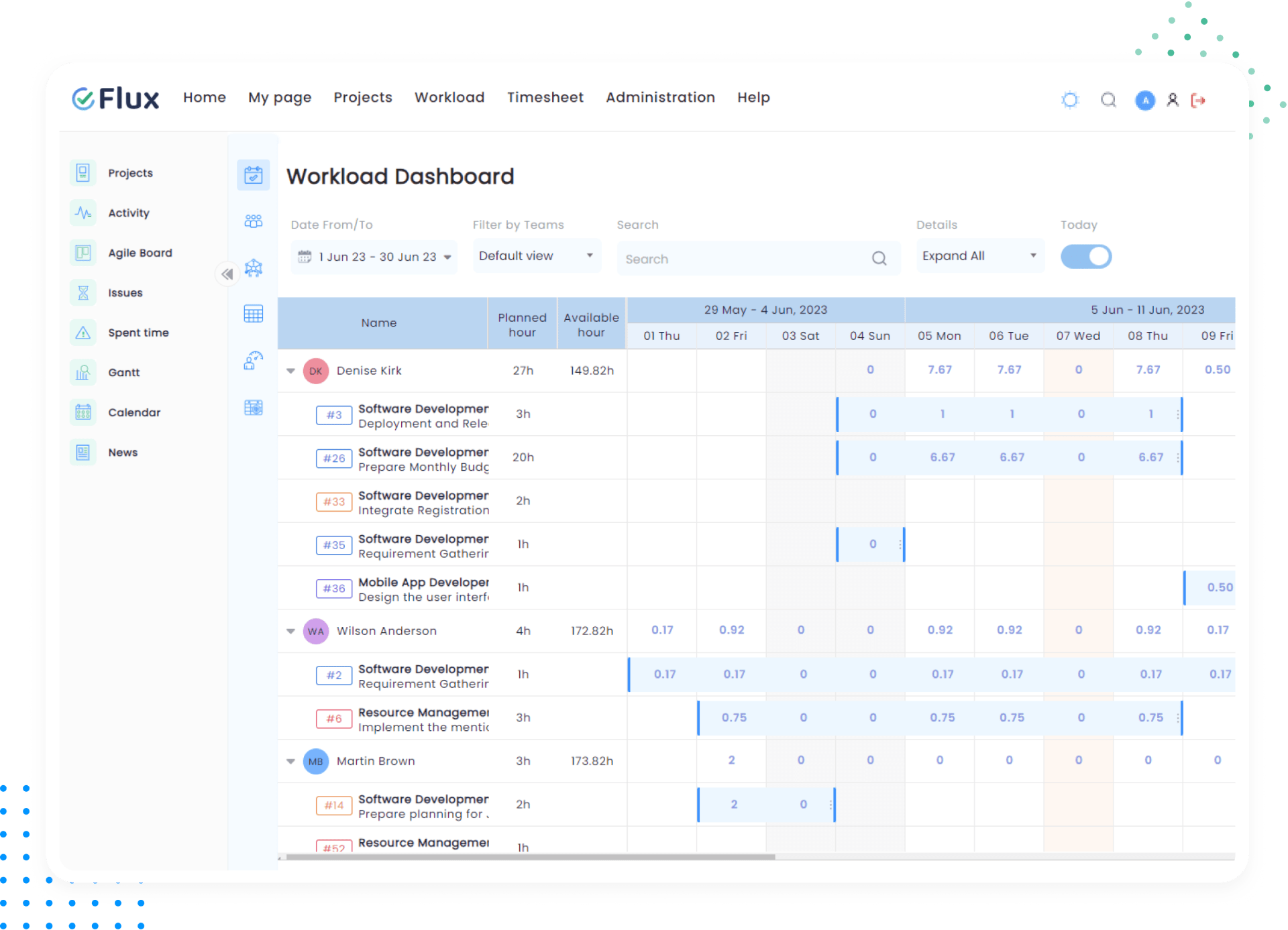
Rating 4.5 out of 5 by clients
Rating 4.5 out of 5 by clients
Manage any number of team members, teams, projects, & processes, regardless of complexity.
Rating 4.5 out of 5 by clients
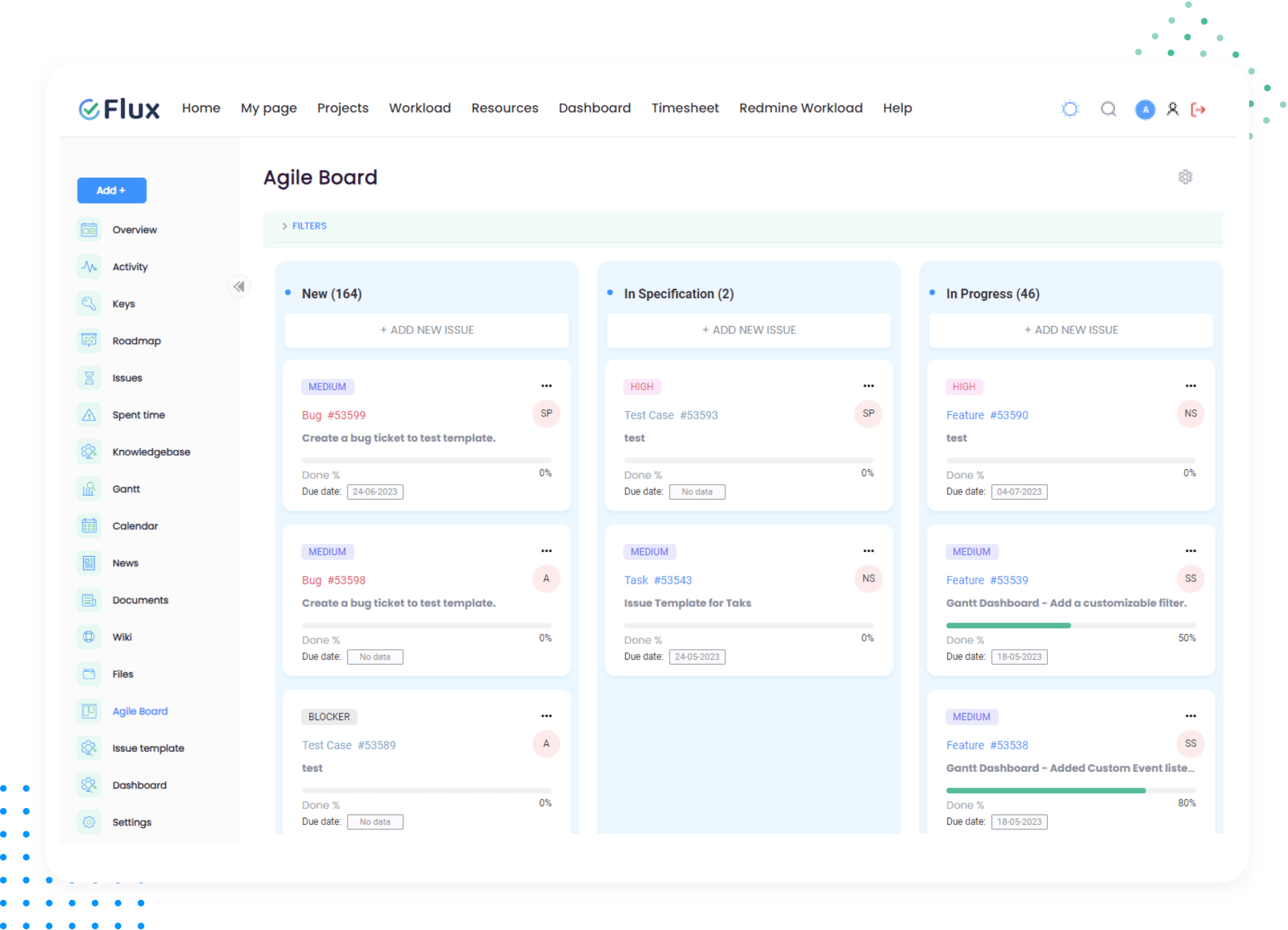
Rating 4.5 out of 5 by clients
Rating 4.5 out of 5 by clients
With Redmineflux, you never miss out on any detail. Our project management solution is designed to foster seamless communication, coordination, and collaboration.
Rating 4.5 out of 5 by clients
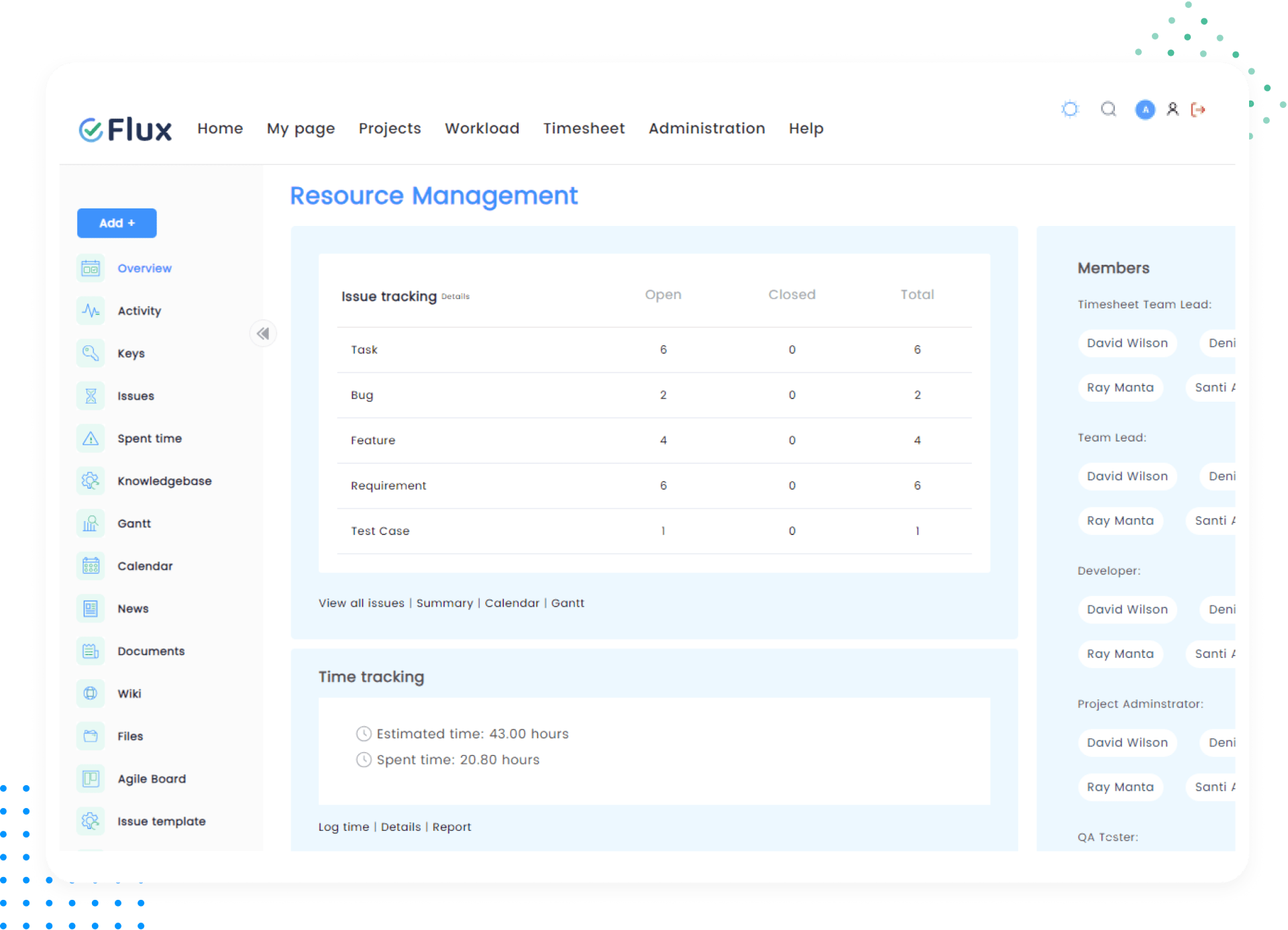
Rating 4.5 out of 5 by clients

Rating 4.5 out of 5 by clients
Unlock the potential of the open-source Redmine, using Redmineflux plugins, equipped with capabilities that empower you to effortlessly manage agile projects, streamline complexities, and foster active collaboration.
Rating 4.5 out of 5 by clients

Rating 4.5 out of 5 by clients



Rating 4.5 out of 5 by clients




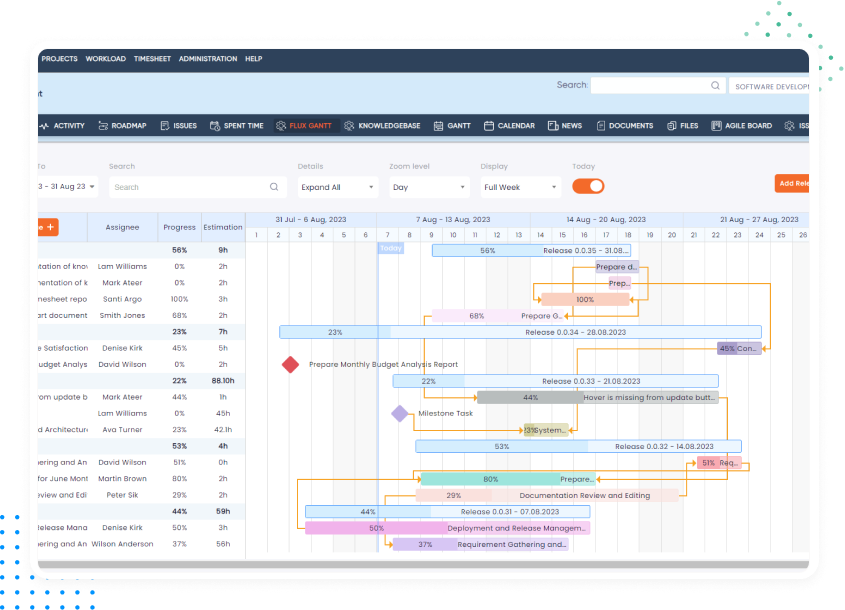
Rating 4.5 out of 5 by clients

Rating 4.5 out of 5 by clients
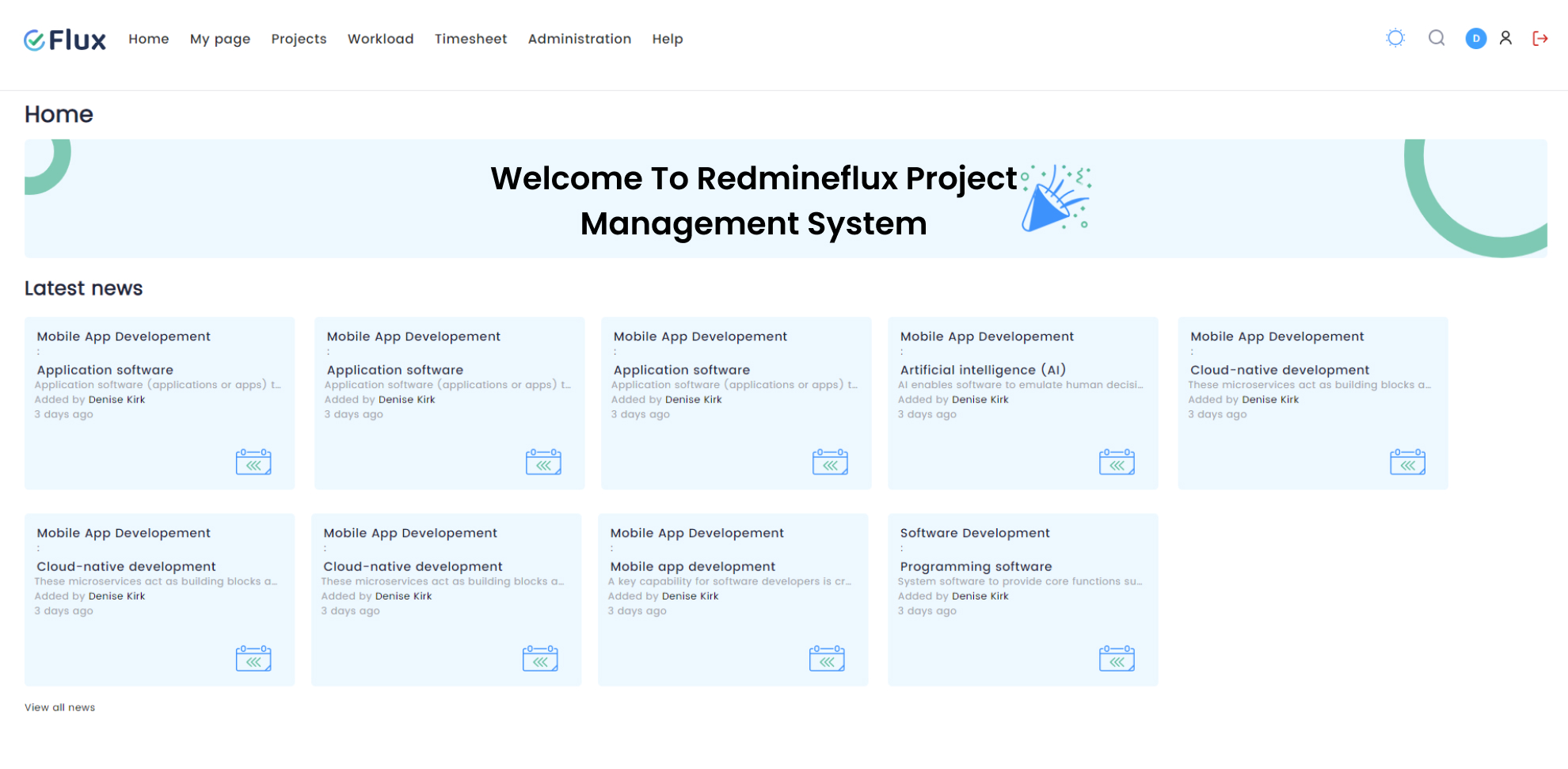
Elevate your project management experience with Redmineflux, a powerful extension of the open-source Redmine. With over 18 plugins and 2 themes, Redmineflux enhances Redmine’s core capabilities, making it a formidable competitor to any commercial project management solution with fraction of the cost.
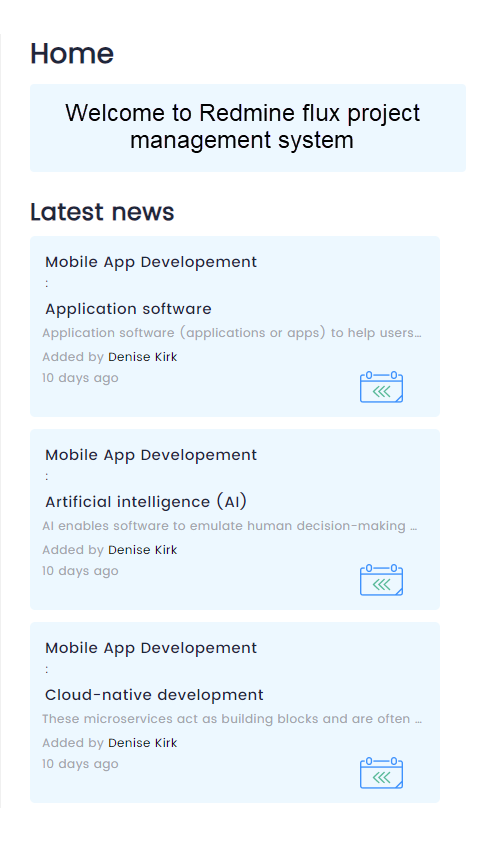
Extend the capabilities of Redmine with our collection of powerful plugins .

Get a clear view of work completed and milestones achieved over time and track progress with respect to the duration planned for the tasks/achievements.

Distribute work amongst team members effectively. Get an idea of the workloads on team members to see who is overloaded, occupied, or free.

Keep track of work pending & accomplished for billable clients with systematic time logs & timesheets to ensure on-time project delivery.

Track the effective work hours automatically. Start the timer when you start working, pause it when you take a break, & resume when you start working again to log in productive hours.

Customizable dashboards that give an overview of achievements, & project status. Get real-time insights to facilitate confident & well-informed decision-making.(Charts and Graphs)

Get an overview of tasks spread across various teams with Agile Boards. Break down complex projects into smaller tasks for a smooth workflow.

Simplify complicated, messy documentation using this feature for building a comprehensive knowledge base for organized documentation.

The Redmineflux Fluxshot is a powerful Chrome extension that seamlessly integrates with Redmine, revolutionizing the way you capture screenshots and create issues right from your browser. With Redmineflux Fluxshot, you can effortlessly provide feedback, report bugs, and update existing issues without ever leaving your current web page.

Efficient issue tracking and project management with customizable templates. Quickly create issue templates to allow for efficient use of resources for achieving project goals.

Eliminate the possibility of missing an important step with checklists. Ensure accurate & consistent completion of tasks by automating processes through this plugin.

Free
Easily edit any parameter or detail, like estimation & due dates. Enable the flexibility of editing issue details without having to switch between windows.

Free
Mention other users in projects, chats, & comments. This feature is helpful in notifying the person & getting their attention regarding a task.
Ensure continues overview of projects by leveraging powerful Redmine plugins that enable better collaboration, communication & execution.

Plan agile sprints & set goals to maximize user performance. Redmineflux helps businesses analyze data to enhance their services as well as organizational productivity.
Facilitate your teams to collaborate in real time with Redmineflux plugins such as Workload, Flux Gantt and Aglie Board. Our plugins offers easy-to-use features for internal communication & sharing information enabling flawless coordination and accelerated deliveries.
Empower your data visualization with Redmineflux dashboard plugin. Seamlessly personalize your charts by adding, deleting, dragging, resizing, or rearranging cards and charts according to your unique requirements. Enjoy a comprehensive dashboard experience with the option to view it in full-screen mode.
Discover the flexibility of Redmineflux, offering both self-hosted and hosted solutions. With the ability to onboard unlimited users and create projects, you can experience all this at a fraction of the cost compared to commercial competitors.
Plan agile sprints & set goals to maximize user performance. Redmineflux helps businesses analyze data to enhance their services as well as organizational productivity.

Facilitate your teams to collaborate in real time with Redmineflux. Our tool offers easy-to-use features for internal communication & sharing documents enabling flawless coordination and accelerated deliveries.
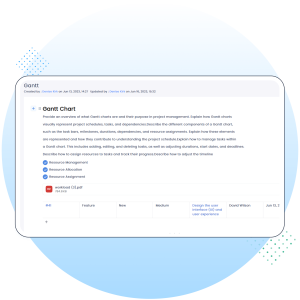
Rest assured about system failure or lags as an effect of concurrent activities from multiple teams. Redmineflux supports seamless resource expansion enabling businesses to scale up as they grow. All at a fraction of their managerial costs.
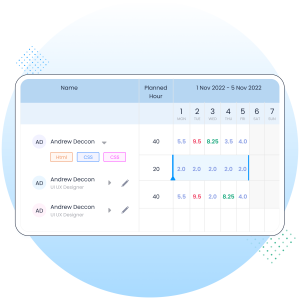
Redmineflux comes loaded with advanced Redmine security plugins & features that secure corporate data and eradicate cyber vulnerabilities. Businesses can protect their data and align project resources for faster deliveries.
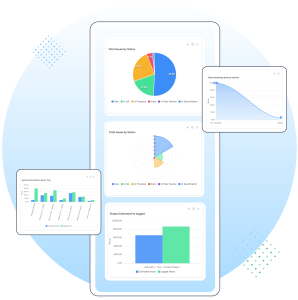
Meet your project deadlines with advanced Redmine features and modern UI.
Testimonial
What People are Saying!

Getting all of my business data organized in one place is all I wanted. With Redmineflux, I can filter data and simplify my agile operations.

Alfred Fleischer
Project Manager

Redmineflux has an easy-to-use interface & is easily customizable. It helps active coordination and focuses project resources in one direction.

Marlena Sievers
CEO
Enhance collaboration, elevate productivity, & meet goals with Redmineflux.
Latest from our blog
Meet your project deadlines with advanced features and systematic data representation.

Redmineflux vs Trello: How to Choose Project Management Tool in 2023
In this article, we will highlight some noteworthy features of two prominent project management tools: Redmineflux and Trello and discover the basic difference between them.

Redmineflux vs Pivotal Tracker: What’s the Difference?
In the fast-paced world of business, success is about more than just staying ahead of the curve. It’s about being nimble, adapting quickly to changes, and responding to market conditions and customer needs with speed and precision. It’s about being able to turn ideas into realities, launching new products and

Redmineflux vs. VersionOne: Which is Better for Your Business?
Project management has evolved significantly over the years, with technological changes, globalization, and business environments. Here are some of the major ways project management has evolved: In summary, project management has evolved from being an ad-hoc process to a well-defined discipline that emphasizes stakeholder management, uses advanced technology, incorporates agile
Subscribe to our newsletter
Get the latest news, updates, & articles related to Redmineflux delivered straight to your inbox.
Quick Link
Redmine Plugins
Contact Us